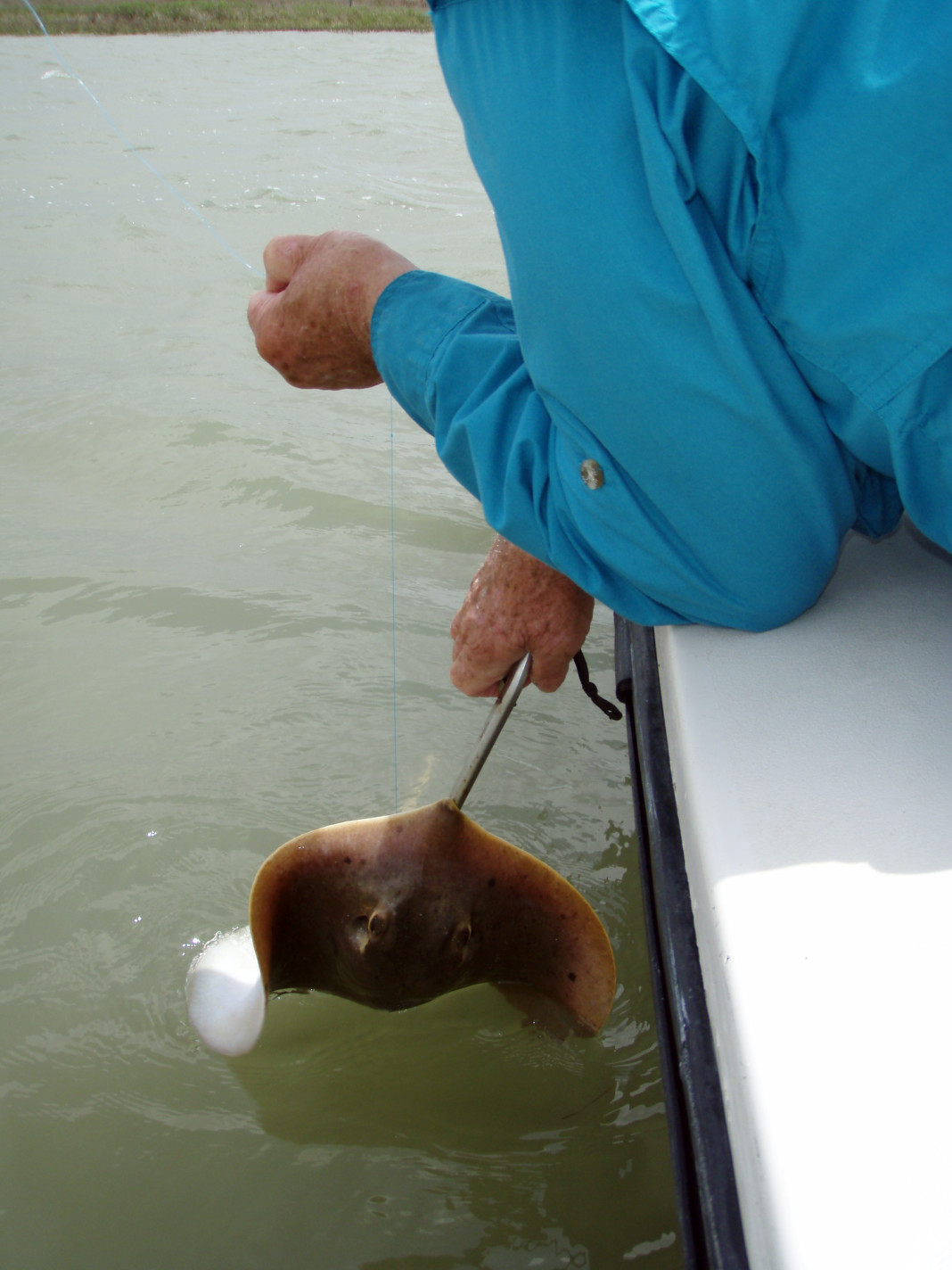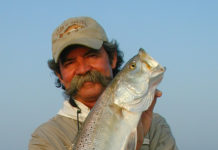The second day of a two-day excursion to Matagorda Bay was going swimmingly for John Crenshaw and some of his friends while fishing with guide Mark Talasek during a previous muggy August day — the kind that makes you wonder what could go wrong.
The angling party spent the first day wade fishing West Matagorda Bay and had a good deal of success, landing more than enough keeper-size speckled trout and redfish, while stringing some that would end up blackened in a hot cast iron skillet.
Despite the scorching summer temperatures, which did affect the bite somewhat, the second day shaped up to be better than the first.
The group opted to head for East Bay on day two, and within minutes of parking the 23-foot Shoalwater, the friends began sticking good fish, including a 29½-inch speck and a bevy of 25- to 26-inch reds. After the fishing slowed, Talasek got the boat and maneuvered over for a watery pickup of the wading anglers. Crenshaw, who grew up on the bay in Port Lavaca and moved to Bay City more than three decades ago, and the others had seen a number of stingrays, and he even reminded at least one fishing buddy to shuffle his feet at least a few times.
Safe to say, Crenshaw knew the drill when it comes to avoiding barbs.
“Of course, I still had visions of a behemoth trout on the end of my line so I pulled my right foot up out of the shallow muck and stepped forward so that I could make one more cast before Mark got too close,” Crenshaw said. “That’s when it happened. I felt a sharp pain in my right ankle and within a couple of seconds was unable to stand up. I yelled ‘I’ve been hit!’ as I fell sideways in the water (about thigh deep), no longer able to stand. I then noticed the blood in the water all around me.”
Crabbing along Texas coast geared toward simplicity, fun, food
Crenshaw noted that one friend nearby thought he’d been attacked by a shark because of the amount of blood in the water, but once the other anglers realized the true culprit they got him back on the boat, peeled off the wading bootie not designed to withstand a barb puncture and saw a dime-sized hole. After applying a bandana tourniquet to the ankle, one of his buddies applied a thumb to an artery that had been nicked and kept the leg elevated, and the whole crew raced back the dock.
Crenshaw said bad thoughts flooded his mind during what was the longest boat ride of his life.
“The short run seemed like an eternity as I twisted and turned on the boat floor, all the while thinking about some of the stingray horror stories that I have read,” Crenshaw said. “I remembered the article that stated how 70 percent of stingray victims go into shock or become unconscious as a result of the poisonous venom. I also thought about the stories where bacterial complications consumed one’s flesh and where doctors performed ‘flesh-whittling’ on infected wounds.”
Back at the dock, Talasek beckoned for a 5-gallon bucket of hot water from a shower facility and after plunging his throbbing wound into it, Crenshaw said the pain subsided — at least a little bit. The anglers loaded him into a friend’s SUV and raced to the hospital in Bay City, which caught the attention of a sheriff’s deputy who pulled the vehicle over for speeding.
It didn’t take long to convince the man that there was a need for speed after he caught a glimpse of the bucket footwear in the back seat and he told the crew to slow down just a little.
At the hospital, X-rays were performed to make sure there was no piece of barb inside Crenshaw’s leg and after numbing up the area, the on-call doctor cleaned the wound heavily from inside and out. Crenshaw was put on a healthy dose of several antibiotics and after visiting his regular doctor after the medication cycle was complete no complications were discovered.
Crenshaw said that even the most experienced of anglers aren’t immune to stepping on what amounts to a land mine, and that even a small miscalculation could end in agony.
“I now understand that no matter how skillful or careful or how long one has wade fished, any wade fisherman is a potential victim,” Crenshaw said. “All it takes is one missed shuffle, a step backwards while setting the hook or dislodging your foot from a couple of inches of muck on the bottom of Matagorday Bay.”
Crenshaw also said that he’s following his wife’s practice of wearing stingray guards, something she has done religiously for the past 15 years.
“The pain was excruciating,” Crenshaw said. “The only way that I know to explain it is a combination of extreme burning, stinging, aching and throbbing — all at the same time.”
Statistics show there are about 5,000 stingray attacks each year in the United States, and the majority come as a result of someone stepping on or cornering what typically are skittish critters. The most documented stingray attack occurred in 2006 on famed wildlife expert Steve Irwin, who was killed after a stingray barb entered his chest while on a dive in Australia’s Great Barrier Reef.
Stingrays are opportunistic feeders and often will suck down dead shrimp or other baits that anglers are hoping will entice trout, redfish or flounder, and many fishermen will just cut the line rather than face the threat of a nick from a barb.
That stinger is a formidable weapon, and hooked barbs that allow it to easily penetrate flesh cause it to embed deeply, which leads to the debate of whether or not to pull it out. In cases where the barb has actually broken off inside the body, it may be better to leave it be until reaching sufficient medical help, especially if it’s near an artery or in an organ.
Wade fishing during the summer on the coast is a leisurely activity practiced by thousands of anglers, but you do need to be cautious when strolling the shallows hoping for scaly delight. I’ve waded in and around stingrays on various excursions, and there is a chill that goes up your spine when you actually kick one out of its perch along the bay floor.
It’s the kind of shudder that makes you invest in stingray guards as soon as possible.
Texas jetty fishing provides some of the finest angling conditions imaginable
Texas fishing calendar: In October head to Gulf beaches for redfish





















I haven’t experienced this personally, but I have had some friends get hit by a stingray. Not a good experience. What you do immediately after getting hit is very important. The pain is one thing, you also have to worry about the infection. Going to the hospital regardless of the injury is a must in my book.
I guess I should have kept my mouth closed. I didn’t step on a stingray or actually get stuck by one, but I did get grazed by one only one month after posting my comment. Long story short it was extremely painful. I was trying to get one off the hook and as I was releasing it, it’s tail came across my hand. My hand was slightly bleeding and immediately I felt the pain. I also had very tiny stickers/bone splinters in my hand. The pain lasted for about 3-4 hours and I didn’t need medical attention.
I can only imagine how painful this is when you actually get the barb in you. I have been fishing for over 35 years in the Galveston Bays and this was my first and hopefully only encounter with a stingray. I am so glad it wasn’t worse for me. Be careful out there and shuffle your feet when you are wading.